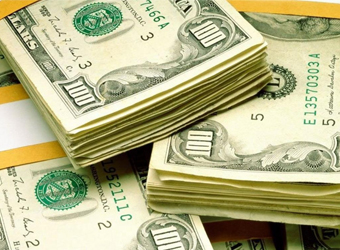Dollar prices held steady against the yen on Monday, having retreated from 12-week highs set last week, due to renewed focus on geopolitical risks amid concerns that North Korea may be preparing another missile test.
North Korea is preparing to test a long-range missile, which it believes can reach the west coast of the United States, a Russian lawmaker who had returned from a visit to Pyongyang was quoted by Russia’s RIA news agency as saying on Friday.
The renewed focus on geopolitical tensions helped lend support to the safe haven yen, and helped pull the dollar down from its post-U.S. jobs data highs.
On Friday, the dollar was already in retreat due to profit-taking, when the North Korea-related headlines reached the market, exacerbating the greenback’s drop, said Stephen Innes, head of trading in Asia-Pacific for Oanda in Singapore.
“Asia is going to really sit back and just see how this is going to play out, keep on the headline watch,” Innes said. “This market’s very, very jumpy.”
The dollar last traded at 112.58 yen, steady on the day. The dollar had risen to as high as 113.44 yen on Friday, its highest level since July 14.
Since Japan is the world’s largest net creditor nation, traders assume Japanese repatriation from foreign countries will eclipse foreign investors’ selling of Japanese assets during times of heightened economic uncertainty.
This means the yen has continued to behave as a safe-haven currency despite Japan’s geographical proximity to North Korea.
The dollar index, which measures the greenback against a basket of six major currencies, eased 0.1 percent to 93.733. On Friday, it had scaled a high of 94.267, its strongest in more than two months.
The wage data from the U.S. September labor market report was seen as a sign of potentially improving inflation and gave the dollar a lift, as it bolstered expectations for the Federal Reserve to raise interest rates again in December.
Average hourly earnings increased 0.5 percent, in September after rising 0.2 percent in August. The gains came as nonfarm payrolls fell 33,000 jobs last month after Hurricanes Harvey and Irma left displaced workers temporarily unemployed and delayed hiring.
A big mover in Monday’s early Asian trade was the Turkish lira, which tumbled amid signs of rising tensions between Turkey and the United States.
The U.S. mission in Turkey and subsequently Turkish mission in Washington mutually reduced visa services after a U.S. mission employee was detained in Turkey last week, saying they needed to reassess each other’s commitment to the security of their personnel.
The U.S. dollar surged 3.3 percent against the Turkish lira to 3.7350. That put the lira on track for its worst daily performance since July 2016.
Sterling regained a bit of footing, coming off a week in which it suffered its biggest weekly percentage drop in a year.
Sterling has been hampered by growing uncertainty over British Prime Minister Theresa May’s control of the leadership.
The pound last traded at $1.3084, up 0.2 percent on the day. It fell 2.5 percent against the dollar last week, its worst weekly performance in a year. On Friday, sterling set a one-month low of $1.3027.
British Prime Minister Theresa May said on Friday she would stay on as leader to provide stability after a former chairman of her Conservative Party said he had garnered the support of 30 lawmakers who wanted her to quit.
The euro edged up 0.1 percent to $1.1743, having pulled up from Friday’s low of $1.1669, its lowest level since August 17. Source: Reuters
Source: Reuters



